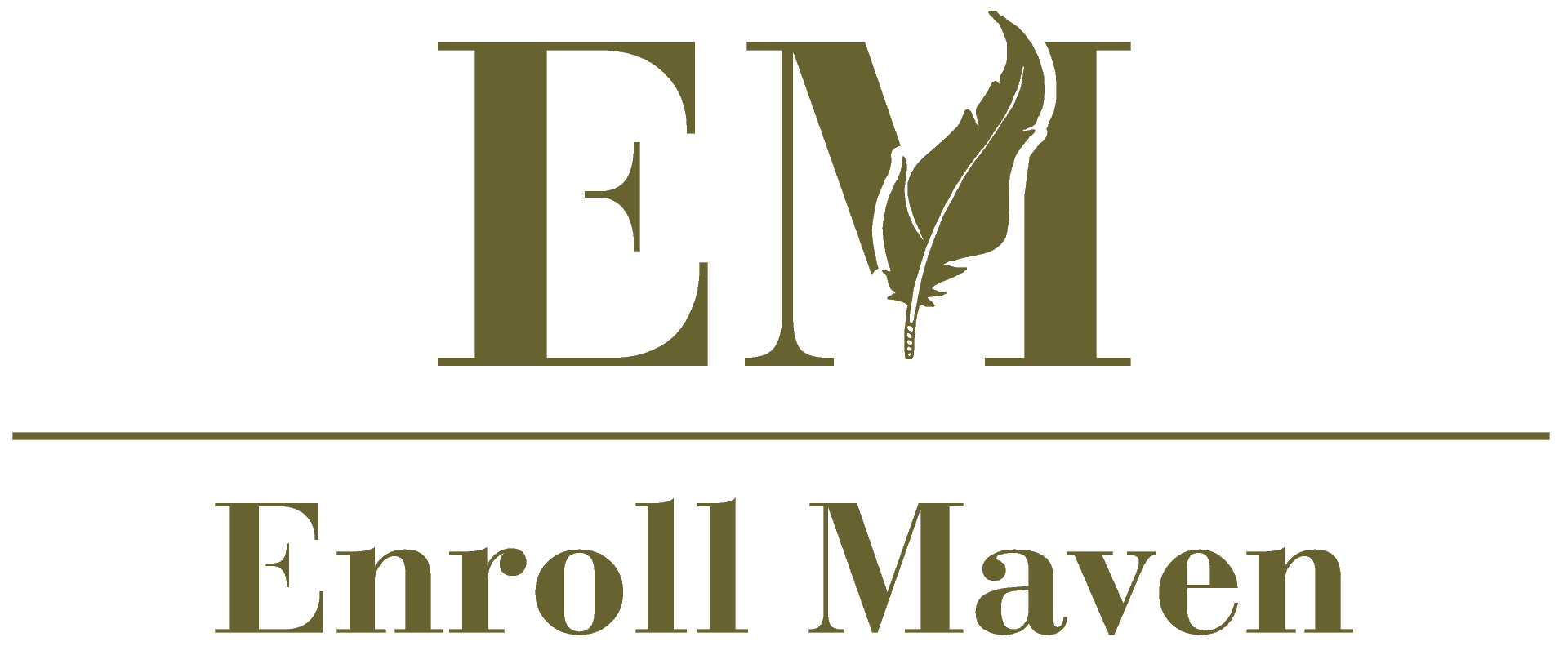As educational institutions face increasingly competitive landscapes, developing effective school enrollment strategies has become crucial for attracting and retaining students. With numerous factors influencing a family’s decision to enroll their child in a particular school, it’s essential for administrators to stay ahead of the curve by implementing innovative and data-driven approaches. By understanding the intricacies of student enrollment trends, leveraging targeted marketing tactics, and fostering community engagement, schools can significantly boost their enrollment numbers and establish themselves as premier educational destinations.
Improving School Enrollment
As a principal of a private school located in a rural village, increasing student enrollment can be challenging.
-
Develop a Comprehensive Marketing Strategy
Create a marketing plan that targets potential students and their families, highlighting the unique features and benefits of your school.
- Utilize social media platforms to share updates, achievements, and events
- Partner with local businesses and organizations to reach a wider audience
- Host open houses and tours to showcase facilities and meet teachers
Offer Competitive Scholarships and Financial Aid
Introduce scholarship programs or financial aid packages to attract students from lower-income families, making your school more accessible and affordable.
- Research and apply for external grants and funding opportunities
- Establish a needs-based scholarship program
- Offer payment plans or tuition assistance
Foster Community Engagement and Partnerships
Build relationships with local community groups, businesses, and organizations to promote your school and create mutually beneficial partnerships.
- Collaborate with local businesses to offer job training programs or apprenticeships
- Partner with community centers to provide extracurricular activities and services
- Host events and workshops to engage with the community and promote your school
Improve Online Presence and Reputation
Optimize your school’s website and online presence to attract potential students and their families, showcasing your school’s strengths and achievements.
- Update your website with fresh content and testimonials
- Encourage alumni and current students to share their experiences
- Monitor and respond to online reviews and feedback
Invest in Teacher Professional Development
Provide ongoing training and support for teachers to enhance their skills and knowledge, leading to improved teaching quality and student outcomes.
- Offer workshops and conferences on best practices and innovative methods
- Provide access to online courses and professional development resources
- Encourage teacher collaboration and peer mentoring
By implementing these strategies, you can effectively improve school enrollment and create a thriving community of learners.
Dealing with Declining Enrollment
I’ve worked with numerous schools and educational institutions struggling with declining enrollment, and I’m here to share my expertise on how to reverse this trend.
-
Strategy 1: Analyze and Address Root Causes
Declining enrollment can stem from various factors, including changes in demographics, competition from neighboring schools, or poor marketing efforts. To effectively combat this issue, it’s essential to identify the root causes and develop targeted solutions.
For instance, if demographic shifts have led to a decline in local student populations, consider partnering with nearby schools or organizations to attract students from surrounding areas.
On the other hand, if poor marketing efforts are to blame, revamp your school’s branding and online presence to better appeal to potential students and their families.
-
Strategy 2: Enhance Curriculum and Programs
A strong curriculum and diverse range of programs can significantly boost enrollment numbers. Consider adding courses or degree programs that cater to emerging industries or in-demand skills.
This could include partnerships with local businesses or organizations to offer vocational training or apprenticeships, providing students with hands-on experience and a competitive edge in the job market.
Additionally, explore opportunities for online or hybrid learning to reach a broader audience and accommodate students with varying schedules or needs.
-
Strategy 3: Leverage Technology and Data Analytics
Effective use of technology and data analytics can help schools optimize their recruitment efforts and better understand their target audience.
Implement a robust CRM system to track interactions with prospective students, monitor application rates, and analyze demographic data to inform future marketing campaigns.
Utilize social media platforms and email marketing tools to engage with students and parents, sharing updates on campus life, academic achievements, and career outcomes.
-
Strategy 4: Foster Community Engagement and Partnerships
Building strong relationships with local communities, businesses, and organizations can lead to increased visibility and credibility for your school.
Pursue partnerships with local employers to offer internships, job shadowing opportunities, or mentorship programs, demonstrating your commitment to preparing students for real-world careers.
Host events, workshops, or conferences that bring together students, parents, and professionals to discuss topics relevant to education and career development.
-
Strategy 5: Develop a Comprehensive Marketing Plan
A well-crafted marketing plan can help raise awareness about your school’s unique strengths and offerings, attracting prospective students and their families.
Develop a multi-channel approach incorporating social media, email marketing, print advertising, and public relations to reach a broad audience.
Invest in high-quality content creation, including videos, blog posts, and infographics, to showcase your school’s culture, academics, and extracurricular activities.
By implementing these strategies, schools can effectively address declining enrollment and position themselves for long-term success.
What Can You Use for Proof of School Enrollment?
I’m often asked what documents I need to prove my school enrollment, and I’m happy to share some common examples.
- A semester class schedule or syllabus for the time period
- A receipt showing payment for tuition or fees during that time
- A letter from the school administration confirming my enrollment status
- A financial aid award letter or scholarship notification
- A transcript or grade report from the school
These documents can vary depending on the institution and the purpose of the request, but they’re commonly accepted as proof of enrollment.
Additional Documents That May Be Required
- A student ID card or photo identification
- A copy of my high school diploma or equivalent
- A letter from a professor or academic advisor verifying my course load
- A document showing my GPA or academic standing
It’s always a good idea to check with the school or organization requesting the documentation to confirm which specific documents they require.
Why Is Proof of Enrollment Important?
Having proof of enrollment can be crucial for various reasons, such as:
- Financial aid disbursement
- Scholarship eligibility
- Student loan deferment or forgiveness
- Employer verification of education
By having these documents readily available, I can ensure a smooth process and avoid any potential delays or issues.
Techniques to Make Your School Enrollment Marketing Plan More Effective
To enhance the effectiveness of your school enrollment marketing plan, consider implementing the following strategies:
-
Develop a Strong Online Presence
Create a website that showcases your school’s unique features, programs, and achievements. Utilize search engine optimization (SEO) techniques to improve visibility and drive organic traffic.
-
Engage with Your Target Audience
Identify your ideal student demographic and tailor your marketing efforts to resonate with them. Leverage social media platforms, email marketing campaigns, and targeted advertising to reach potential students and families.
-
Foster a Community of Ambassadors
Encourage current students, alumni, and staff to share their positive experiences and testimonials about your school. This can help build credibility and trust among prospective students and families.
-
Utilize Data-Driven Decision Making
Analyze your marketing efforts and track key performance indicators (KPIs) to measure success. Use data-driven insights to inform future marketing decisions and optimize your strategy.
-
Offer Personalized Experiences
Provide tailored tours, meetings, and communication channels to cater to individual needs and interests. This can help build relationships and increase the likelihood of enrollment.
-
Leverage Storytelling Techniques
Share compelling stories and anecdotes about your school’s history, mission, and values. Highlight the achievements and successes of your students, faculty, and staff to create an emotional connection with prospective students and families.
-
Stay Up-to-Date with Industry Trends
Attend conferences, workshops, and webinars to stay informed about the latest developments and best practices in education marketing. Continuously update your knowledge and skills to remain competitive.
-
Measure and Evaluate Your Success
Regularly assess your marketing efforts and adjust your strategy accordingly. Track metrics such as open rates, click-through rates, and conversion rates to gauge the effectiveness of your campaigns.
-
Collaborate with Other Departments
Work closely with admissions, finance, and other departments to ensure alignment and consistency in your marketing efforts. Share resources and expertise to maximize impact and efficiency.
-
Invest in Digital Advertising
Allocate a budget for digital advertising, including Google Ads, Facebook Ads, and native advertising. Target specific demographics, interests, and behaviors to reach your ideal audience.
-
Host Events and Open Houses
Organize events, open houses, and campus tours to showcase your school’s facilities, programs, and culture. Provide opportunities for prospective students and families to interact with faculty, staff, and current students.
-
Optimize Your Website for Mobile Devices
Ensure that your website is responsive and provides a seamless user experience across various devices and screen sizes. This is crucial for attracting mobile users and improving engagement.
-
Utilize Email Marketing Automation
Set up automated email sequences to nurture leads, promote programs, and share updates. Use segmentation and personalization to tailor your messaging and improve engagement.
-
Monitor and Respond to Online Reviews
Track online reviews and ratings on platforms like Yelp, Google My Business, and Niche. Respond promptly to feedback, both positive and negative, to demonstrate your commitment to customer service and satisfaction.
-
Partner with Local Businesses and Organizations
Forge partnerships with local businesses, organizations, and community groups to expand your reach and influence. Collaborate on joint marketing initiatives, sponsorships, and events to benefit both parties.
-
Invest in Content Creation
Develop high-quality, engaging content that resonates with your target audience. Utilize blog posts, videos, podcasts, and infographics to educate, entertain, and inspire prospective students and families.
-
Measure Return on Investment (ROI)
Track the financial return on investment (ROI) of your marketing efforts to determine which strategies are most effective. Adjust your budget allocation accordingly to maximize ROI and minimize waste.
-
Stay Compliant with Regulations
Ensure that your marketing efforts comply with relevant laws, regulations, and industry standards. Maintain transparency and accuracy in your communications to build trust and credibility with prospective students and families.
Encouraging Students to Enroll
I’m passionate about helping students find the right educational path, and I’ve learned a thing or two about what works.
-
Develop a Strong Online Presence
Create a website or social media accounts that showcase your institution’s unique features and benefits. Use high-quality images and videos to give prospective students a sense of what life would be like on campus.
-
Offer Personalized Support
Every student has different needs and goals. Offer personalized support through counseling services, academic advising, and career coaching. This will help students feel seen and heard, increasing the likelihood that they’ll choose your institution.
-
Highlight Success Stories
No one wants to attend a school with a poor reputation. Highlight stories of successful alumni who have gone on to achieve great things. This will give prospective students a sense of pride and belonging.
-
Make it Easy to Apply
The application process can be daunting, especially for first-time college students. Make it easy by streamlining the process and providing clear instructions. Consider offering online applications or chatbots to help guide students through the process.
-
Provide Financial Aid Options
Many students are deterred from applying due to financial concerns. Provide options for scholarships, grants, and loans to help make education more accessible.
-
Host Open Houses and Tours
Give prospective students a chance to see your campus firsthand. Host open houses and tours to show off your facilities, meet faculty and staff, and get a sense of the community.
-
Utilize Social Media
Social media is a powerful tool for reaching prospective students. Utilize platforms like Instagram, Facebook, and Twitter to share updates, behind-the-scenes peeks, and student testimonials.
-
Partner with Local Businesses
Partner with local businesses to offer exclusive discounts or promotions to students. This will give students a sense of connection to the community and increase the likelihood that they’ll choose your institution.
-
Offer Flexible Scheduling
Not every student fits into a traditional schedule. Offer flexible scheduling options, such as online courses or part-time programs, to accommodate students with busy lives.
-
Emphasize Career Opportunities
Students want to know that their education will lead to a successful career. Emphasize the career opportunities available to graduates, and highlight any notable employers who hire your alumni.
By implementing these strategies, you can increase student enrollment and create a positive experience for prospective students.
Four Essential Strategies for a Good Marketing Program
A well-crafted marketing program is crucial for businesses looking to establish a strong online presence and drive sales.
- Product: Developing a unique and high-quality product that meets the needs of your target audience is essential. Consider factors such as pricing, packaging, and branding to differentiate your product from competitors.
- Price: Pricing your product correctly is vital to attracting customers and maximizing revenue. Research your competition and consider factors such as production costs, market conditions, and customer willingness to pay.
- Promotion: Effective promotion involves creating awareness and interest in your product among your target audience. Utilize various channels such as social media, email marketing, content marketing, and paid advertising to reach potential customers.
- Place: Determining the most suitable distribution channels for your product is critical to reaching your target audience efficiently. Consider factors such as logistics, inventory management, and supply chain management to ensure timely delivery of products to customers.
By incorporating these four Ps into your marketing strategy, you can effectively promote your product, attract customers, and drive sales.
Additional Tips for Success
- Conduct thorough market research to understand your target audience’s needs and preferences.
- Develop a unique value proposition that sets your product apart from competitors.
- Utilize data analytics to track the effectiveness of your marketing efforts and make informed decisions.
- Foster strong relationships with suppliers and partners to ensure efficient distribution and logistics.
Best Practices for Marketing Programs
To maximize the effectiveness of your marketing program, consider the following best practices:
- Set clear goals and objectives for your marketing efforts.
- Develop a comprehensive marketing plan that aligns with your business strategy.
- Monitor and adjust your marketing efforts regularly to ensure optimal results.
- Stay up-to-date with the latest marketing trends and technologies to remain competitive.





0 Comments